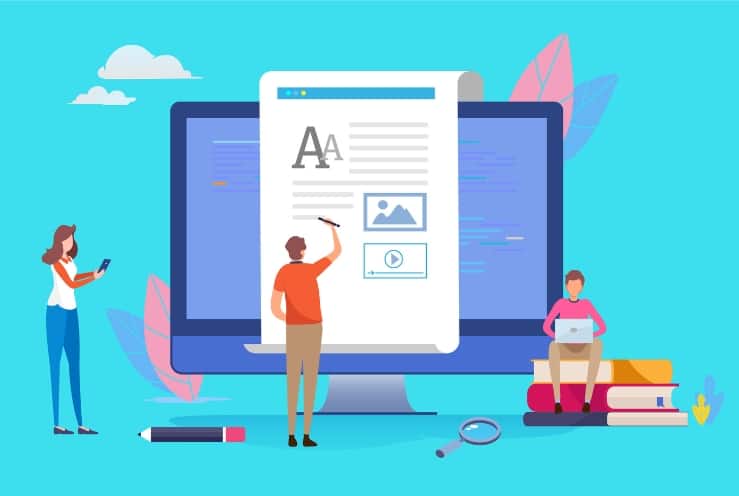
10DLC Compliance Checklist: What You Need Before You Send
Since December 1, 2024, U.S. carriers have begun actively blocking texts sent from unregistered 10-digit numbers, which causes disruptions many companies didn’t see coming.
On top of that, some platforms offer little to no guidance, which makes it even harder for you to stay compliant and maintain message deliverability.
The sooner you register, the sooner you can send compliant, high-deliverability texts from your local 10-digit number.
In this article, we’ll take a closer look at why enforcement is increasing and what steps your business needs to take to stay ahead. Carriers are continuously tightening enforcement around unregistered application-to-person (A2P) messaging, so operating without a registered number is no longer an option.
What Is 10DLC?
10DLC (10-digit long code) is a dedicated phone number format created for businesses to send A2P text messages.
Unlike traditional short codes that consist of a 5 or 6-digit code, a 10DLC number allows your business number to send SMS and MMS messages using standard long code numbers.
Why 10DLC Was Introduced
Carriers in the United States developed this new system to address increasing concerns about unregistered messages, spam, message deliverability, and regulatory compliance.
Previously, many businesses relied on shared short codes or standard long codes, which were either costly or prone to abuse. These outdated methods often resulted in blocked messages, low delivery rates, or worse, carrier penalties.
With 10DLC, mobile network operators introduced a structured vetting process to make sure your messaging campaigns are trustworthy and aligned with regulatory standards.
What Makes 10DLC Different
Here’s what sets 10DLC apart from other SMS sending options:
- Registered campaign traffic means carriers know your brand and the intent behind each message
- Built to protect consumers by filtering out unverified messaging practices
- Supports sending applications to person use cases, where you can send transactional or promotional content to end users
- Enables higher delivery rates thanks to improved validation and message traceability
- Offers better delivery quality than generic long codes while maintaining local familiarity
How 10DLC Works for Business Messaging
If you’re texting consumers in your day-to-day operations, 10DLC is ideal for this type of customer communication.
10DLC is built for A2P texting, and messages can be sent from software platforms like CRMs or SMS marketing platforms. These messages can include anything from appointment confirmations, order updates, promotions, event invitations, and two-factor authentication (2FA).
Because the messages originate from a platform, carriers require a registration process to ensure the traffic is legitimate. With 10DLC, you’re registering your business and your messaging use case.
Throughput and Carrier Trust Scores
Your messaging speed is determined by how carriers score your brand. Higher scores lead to higher throughput, which is essential for the timely delivery of things like event alerts or appointment confirmations.
Your messaging strategies, registration accuracy, and industry can also influence scoring. Platforms like Textellent that understand the telecommunications industry help you optimize your setup for increased throughput.
Message Delivery and Local Recognition
Once registered, your messages are delivered reliably from local-looking numbers to improve open rates and reduce suspicion. Customers are more likely to receive text messages and engage when messages appear familiar.
You also retain full control over that number that is dedicated to your business. Customers can save it, reply to it, and expect consistent communication from the same contact point.
Built-In Compliance
One of the biggest strengths of 10DLC is compliance. Because your campaigns are vetted before approval, carriers are more likely to deliver your messages consistently.
You’ll also benefit from fewer blocked messages, better deliverability, and compliance with the Telephone Consumer Protection Act (TCPA) regulations.
Textellent offers opt-in tools, unsubscribe management, and built-in tracking to keep your messaging practices transparent and audit-ready. It also helps ensure compliance across campaigns with end-to-end support.
10DLC vs Short Codes vs Toll-Free Numbers
Choosing the right number type for your business texting strategy impacts your brand’s visibility, message deliverability, and SMS compliance. Here’s how 10DLC, short codes, and toll-free numbers compare, so you can decide what best fits your goals.
Short Codes
Short codes are 5- or 6-digit numbers used for high-volume texting. Large companies often use them for bulk marketing, emergency alerts, and time-sensitive campaigns.
The main advantage is throughput. Messages can be sent in bulk, very quickly.
However, leasing a short code is expensive, and registration can take several weeks. This option is typically best suited for large enterprises with high messaging budgets and national campaigns.
Toll-Free Numbers
Toll-free numbers are 800-series numbers that can be used for voice and text. They’re a good choice if you need a consistent point of contact for support or transactional messaging.
While not local in appearance, toll-free numbers are recognized and trusted by many customers.
These numbers support moderate texting volumes. Registration is still required to use them for A2P messaging, but the process is usually quicker than short code registration.
They’re often used by businesses that also offer phone-based customer service, which allows voice and SMS on a single line.
10DLC
These numbers look like standard local long code numbers but are registered and approved for sending A2P 10DLC texts. They offer a balance of affordability, compliance, and performance.
One of the biggest advantages is that 10DLC numbers give your business a local presence, which increases trust and open rates.
You submit your business information, register your use case (such as appointment reminders or customer service), and receive a trust score that affects your sending speed.
Registering for 10DLC: What You Need to Know
10DLC registration helps carriers verify who you are and what types of messages you’re sending. It’s part of a larger effort to reduce spam, increase message deliverability, and protect consumers.
Registration also establishes a layer of trust between your brand and the mobile networks. That trust affects your throughput speed, which controls how many messages are sent and prioritized.
The Two Parts of 10DLC Registration
There are two main parts to 10DLC registration:
Brand Registration
You’ll submit basic details about your business, such as your legal name, website, tax ID (EIN), and contact information. This verifies your organization as a legitimate sender. As a business owner, this step is essential to validate your reputation.
Campaign Registration
You’ll define the kind of messages you plan to send, like appointment reminders, support updates, promotional offers, or billing alerts.
Each campaign must be categorized and approved by carriers through The Campaign Registry (TCR), which serves as a central hub for verification and control.
Once approved, your brand and campaign are assigned a trust score that determines your messaging limits and prioritization within carrier systems.
How Long Does Registration Take
On average, registration takes a few days to a couple of weeks. That timeline depends on how accurate your information is and how responsive your messaging platform is in handling the process.
Many of the delays businesses face come from incomplete submissions or poor guidance from their providers.
That’s why working with a provider like Textellent, who manages the entire process for you, is so valuable. You avoid common errors and stay ahead of carrier enforcement with detailed steps for success.
Costs Associated With 10DLC Registration
10DLC registration isn’t free. You’ll typically encounter a one-time brand registration fee, monthly campaign fees, and small carrier pass-through charges for each message sent.
The total cost is still more affordable than leasing a short code, and the added compliance makes the investment worthwhile. Once registered, you also gain access to comprehensive delivery pipelines and improved message reliability.
Take the First Step to Compliant SMS—Start With Textellent!
As carriers continue tightening restrictions, every message you send from an unregistered number is at risk of being blocked.
Textellent makes it easy to stay compliant, protect your deliverability, and keep your communication running without interruption.
This platform is built to simplify 10DLC registration from start to finish. From submitting the required brand details to getting campaigns approved and monitored, it guides you through each step with clear direction and built-in compliance tools.
Reliable communication starts with compliance, and getting ahead now means avoiding bigger problems later. Sign up for a free trial or schedule a demo consultation today!
FAQs About 10DLC
What does 10DLC mean?
10DLC stands for 10-digit long code. It refers to a standard 10-digit phone number that’s registered and approved for business text messaging, specifically for application-to-person (A2P) use.
It looks just like a regular local number but is authorized to send higher volumes of texts while remaining compliant with carrier rules. If you’re sending texts to customers using software or an automated texting software, 10DLC is the format designed for that purpose.
What happens if I don’t register 10DLC?
If you continue to send texts from an unregistered number, your messages may be blocked, delayed, or flagged as spam by mobile carriers.
U.S. carriers began actively enforcing 10DLC requirements, which means messages from unregistered business numbers are now at serious risk of being filtered out. Not registering also puts your business at risk of non-compliance and could impact customer trust and engagement.
What is the 10DLC requirement?
The 10DLC requirement is a mandatory registration process for any business sending A2P SMS or MMS messages through a 10-digit phone number. You must register your brand and your campaign use case with TCR.
This guarantees carriers know who you are, what types of messages you’re sending, and that you’re following proper compliance standards.
Working with a direct connect aggregator can speed up this process and help ensure smooth carrier approval and delivery.
What is a 10DLC number example?
A 10DLC number looks like a standard phone number, such as (555) 123-4567. The difference is that it has been registered and approved for business messaging. It’s local, familiar to your customers, and can be used to send compliant SMS and MMS campaigns.
With providers like Textellent, you can use your existing number or get a new one. They’ll manage the registration process for you while answering any common questions that arise during setup.





